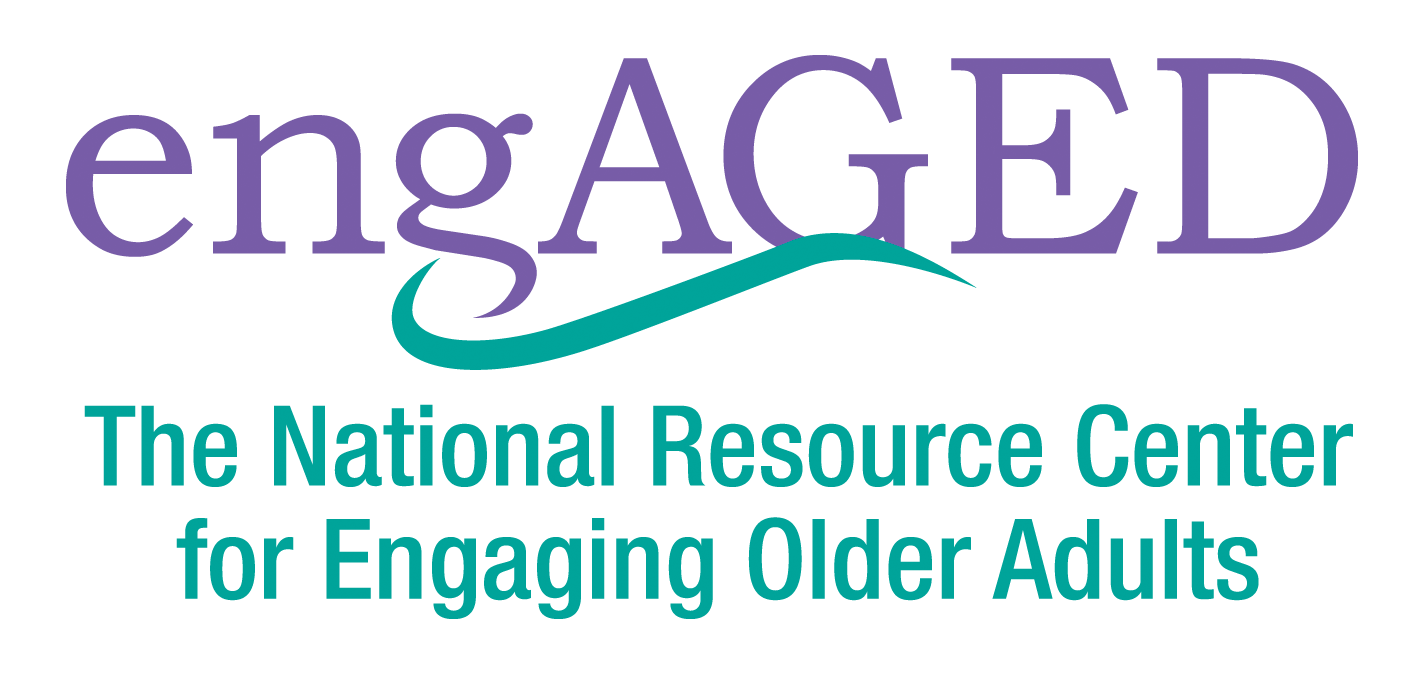Implementing Hybrid Programs: New Resource from engAGED and OATS
engAGED worked with Older Adults Technology Services (OATS) from AARP to develop Implementing Hybrid Programs: Considerations and Best Practices for Aging Network Organizations, a manual for organizations considering implementing hybrid programs. The manual provides guidance, best practices and examples of what works best when designing hybrid programs (i.e., programs that are held both virtual and in-person simultaneously) that serve older adults.
With the COVID-19 pandemic highlighting the logistical benefits of hybrid programs, it’s clear that the model is here to stay. Hybrid programs can offer flexible and tailored experiences for older adults. Notably, the term “hybrid” has different meanings in a programming context, complicating efforts to present hybrid programs to stakeholders who may have unique understandings. To offer clarity and definition, the manual offers OATS’ preferred hybrid model in three variations:
A/B Segmentation
This model divides participants into two cohorts to alternate schedules and reduce volume during in-person classes. It is similar to the system that schools commonly used to assign two groups of students to alternate in-person/at home attendance days as they emerged from pandemic lockdowns.
In-Person Participants with One Virtual Instructor
In this model, instructors connect virtually to participants who are gathered in person. This model can allow for both structured and real-time participation, and the flexibility for trainers to teach remotely.
In-Person and Virtual Participants and Two Instructors
This model includes two facilitators/instructors: one in person and one virtual. Benefits of this model include offering a consistent experience for both in-person and virtual participants while maintaining the opportunity for one-on-one engagement.
Prior to implementing hybrid programming, organizations should determine what model would best fit the needs and preferences of participants. They should consider the reasons for offering hybrid programming, the target audiences, the expected level of demand and hybrid program schedules. To increase participation, organizations might consider scheduling hybrid programs around mealtimes or provide special perks such as early access or raffles for in-person attendees.
Another reflection is whether the hybrid program is a one-off session or longer-term engagement. In OATS’ experience, programs offered over five or 10 weeks have higher attendance and are more successful than one-off, lecture style programs.
While hybrid models require additional planning and preparation, they offer great flexibility and can be highly customized for participants. A key factor in determining the success of hybrid programs is the ability of organizers to gather and be responsive to feedback from facilitators and participants. The Implementing Hybrid Programs manual includes examples of hybrid programming best practices about presenter duties, virtual enhancements, interactive features and more.
OATS from AARP, an award-winning social impact organization that offers technology programs, community training and strategic engagements to shape the future of aging, is a technology partner with engAGED. OATS Executive Director Tom Kamber also serves on engAGED’s Project Advisory Committee, which guides the work of engAGED to help Aging Network and partner organizations expand and enhance their social engagement offerings.
